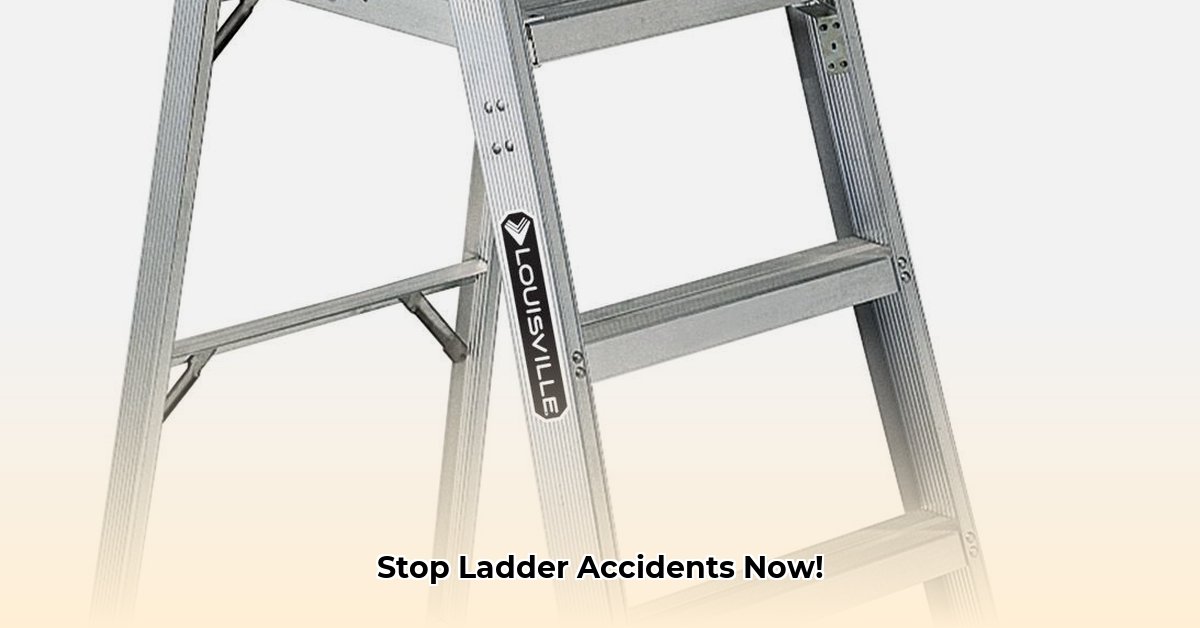Let’s face it, working at heights can be nerve-wracking. Falls from ladders or scaffolding are major causes of construction site accidents. This instructional guide provides actionable steps to use ladders and scaffolding safely, boosting your confidence and protection. From understanding when to use a ladder versus scaffolding, to mastering best practices, we’ll equip you for a safer jobsite. Get ready to become a safety pro at heights, ensuring a secure environment for everyone.
Ladder Scaffolding: A Safety Guide to Prevent Accidents on Worksites
It’s true: working high up can be risky. You can drastically reduce dangers by knowing and applying the facts. This guide focuses on safe ladder scaffolding practices, making your safety paramount. Consider this your essential survival manual for navigating work at elevated heights while adhering to scaffolding safety regulations and preventing scaffolding accidents.
Understanding Ladder Scaffolding Systems
Before diving into safety specifics, let’s define ladder scaffolding. It’s a temporary elevated platform using ladders as the primary support structure. Planks or platforms are laid across the ladders to create a working surface. Ladder scaffolding is commonly used for light-duty tasks, where mobility and quick setup are important.
While ladder scaffolding can be a cost-effective solution, it’s crucial to understand its limitations. It’s generally suitable for reaching heights between 6 and 20 feet and should not be used for heavy-duty construction or when working with heavy materials.
Selecting the Right Equipment: Matching Tools and Work Environment
Equipment selection is paramount. The project and the height you need to reach dictate the equipment. Consider these key points for ladder scaffolding:
- Ladder Types: A Material Matter:
- Aluminum ladders are lightweight and easy to move, but they conduct electricity, making them unsuitable for electrical work.
- Fiberglass ladders are non-conductive and ideal for working around electrical wires. However, they are typically heavier than aluminum ladders.
- Wooden ladders are strong and can be used in various environments, but they are susceptible to moisture damage and splintering.
- Weight Limits: Don’t Push It! Always verify the weight limits on ladders, platforms, and supports.
- Ladders are classified by duty rating, which indicates the maximum weight they can safely support.
- Type III (Light Duty): Up to 200 pounds
- Type II (Medium Duty): Up to 225 pounds
- Type I (Heavy Duty): Up to 250 pounds
- Type IA (Extra Heavy Duty): Up to 300 pounds
- Type IAA (Super Heavy Duty): Up to 375 pounds
- Account for the weight of the worker, tools, and materials when selecting a ladder.
- Platform Planks: Use only scaffold-grade planks that are specifically designed to support weight between ladders. Common plank sizes are 2×10 or 2×12 inches.
Setting Up Your Ladder Scaffolding: A Step-by-Step Guide to Safety
Setting up ladder scaffolding requires precision and attention to detail. Follow these steps for a safe setup:
- Level Ground: Foundation of Safety: Ensure a perfectly level and solid ground.
- Use leveling jacks or wooden shims under the ladder feet to compensate for uneven surfaces.
- Proper Spacing: Ensuring Stability: Space ladders correctly for overall stability, preventing collapses.
- A good rule of thumb is to space ladders no more than one-third of the ladder height apart.
- For example, if the ladders are 9 feet high, the spacing between them should not exceed 3 feet.
- Secure Connections: No Wobbly Business: Everything must connect firmly; loose parts pose major risks.
- Use ladder jacks that securely attach to the ladder rungs and provide a stable platform for the plank.
- Ensure that the ladder jacks are properly rated to support the weight of the platform, worker, and materials.
- Bracing: Extra Support for Safety: Add bracing for supplementary support, especially at higher elevations.
- Install cross braces between the ladders to prevent them from swaying or collapsing.
- Use metal scaffolding braces specifically designed for ladder scaffolding.
- Regular Inspections: Spotting Issues Early: Continuously monitor scaffolding during projects, checking for damage or loose parts.
- Before each use, inspect the ladders, ladder jacks, planks, and bracing for any signs of damage or wear.
- Replace any damaged components immediately.
Best Practices: Smart Habits for Safe Scaffolding
Incorporate these essential safety habits into your everyday routine to improve worker safety.
- Never Overload: Remember those weight limits? Strictly adhere to them.
- Harness Up: Always wear a full-body harness and safety gear.
- Attach the harness to a secure anchor point above the work platform.
- Know Your Surroundings: Be alert to hazards such as electrical wires or falling objects.
- Maintain a safe distance from power lines.
- Use debris netting to prevent objects from falling off the scaffolding.
- Take Breaks: Fatigue leads to mistakes. Regular breaks maintain focus and improve judgment to mitigate incidents.
- Follow the Rules: Comply with all relevant safety regulations (like OSHA standards), and understand your jobsite’s ladder safety protocols.
- OSHA provides specific guidelines for ladder scaffolding safety.
- OSHA 1926.451 covers general requirements for scaffolding.
Common Hazards and How to Avoid Them
| Hazard | How to Avoid It |
|---|---|
| Ladder Collapse | Proper setup, regular checks, sturdy bracing, secure connections are vital. |
| Falls from Height | Use a safety harness and secure work platforms to drastically reduce falls. |
| Electrocution | Use fiberglass ladders near electrical lines to prevent electrical incidents. |
| Falling Objects | Secure tools with tool belts to avoid unintended drops from scaffolding levels. Post a warning sign to alert people below. |
| Poor Scaffolding Setup | Undertake certified training and consistently adhere to proper safety procedures. |
| Slipping Hazards | Keep the platform clean and free of debris, water, or other slip hazards. Wear slip-resistant footwear. |
| Exceeding Weight Limits | Know the weight capacity of the scaffolding and never exceed it. Distribute weight evenly across the platform. |
| Using Damaged Equipment | Inspect all components before each use and replace any damaged parts immediately. |
| Working in Inclement Weather | Avoid using ladder scaffolding in high winds, rain, or other adverse weather conditions. |
Ladder Scaffolding Maintenance: A Little TLC Goes a Long Way
Regular equipment inspections safeguard both safety and equipment longevity. Making routine checks and maintenance will help extend equipment life and prevent issues before they become serious accidents.
- Inspect ladders for cracks, bends, or other damage.
- Check ladder jacks for proper functioning and secure attachment.
- Examine planks for signs of rot, decay, or cracks.
- Ensure that all bracing and connections are tight and secure.
Remember, safety isn’t optional—it’s paramount. By following these tips and prioritizing safety, you can greatly reduce accident risks from using ladder scaffolding. Your safety depends on it!
How to Choose the Safest Scaffolding for DIY Construction Projects
Key Takeaways:
- Selecting the right scaffolding is crucial for DIY projects.
- Consider project height, weight capacity, and site conditions.
- Different scaffolding types possess various advantages and disadvantages.
- Prioritize scaffolding that is easy to safely assemble, use, and dismantle.
- Regular inspection is paramount.
Understanding Your Needs
Before looking at options, assess your project thoroughly. What’s the maximum height? How much weight will the scaffold carry? Is your ground level and stable?
- Project Height: Determine the maximum height you need to reach to complete your project. This will help you choose scaffolding that is tall enough and stable at that height.
- Weight Capacity: Estimate the total weight of the worker, tools, and materials that will be on the scaffolding. Choose scaffolding with a weight capacity that exceeds this estimate.
- Site Conditions: Consider the ground conditions where the scaffolding will be placed. Level and stable ground is essential for safe scaffolding setup.
Scaffolding Types: A Comparison
Diverse scaffolding types exist, each with pros and cons.
- Frame Scaffolding: Strong and versatile, ideal for varied uses but requiring more assembly.
- Good for reaching high areas on walls, ceilings, and roofs.
- Rolling Scaffolding: Provides easy mobility, but crucial to consider weight limits and setup requirements.
- Ideal for projects that require frequent movement, such as painting or drywall installation.
*
- Ideal for projects that require frequent movement, such as painting or drywall installation.
- Explore Stardew Valley Nexus Mods to Transform Your PC Farming Game - December 7, 2025
- Stardew Valley Mods Steam Setup for Your Perfect Farm Life - December 6, 2025
- Sims 4 Mods to Make Your Game Much More Fun - December 5, 2025










